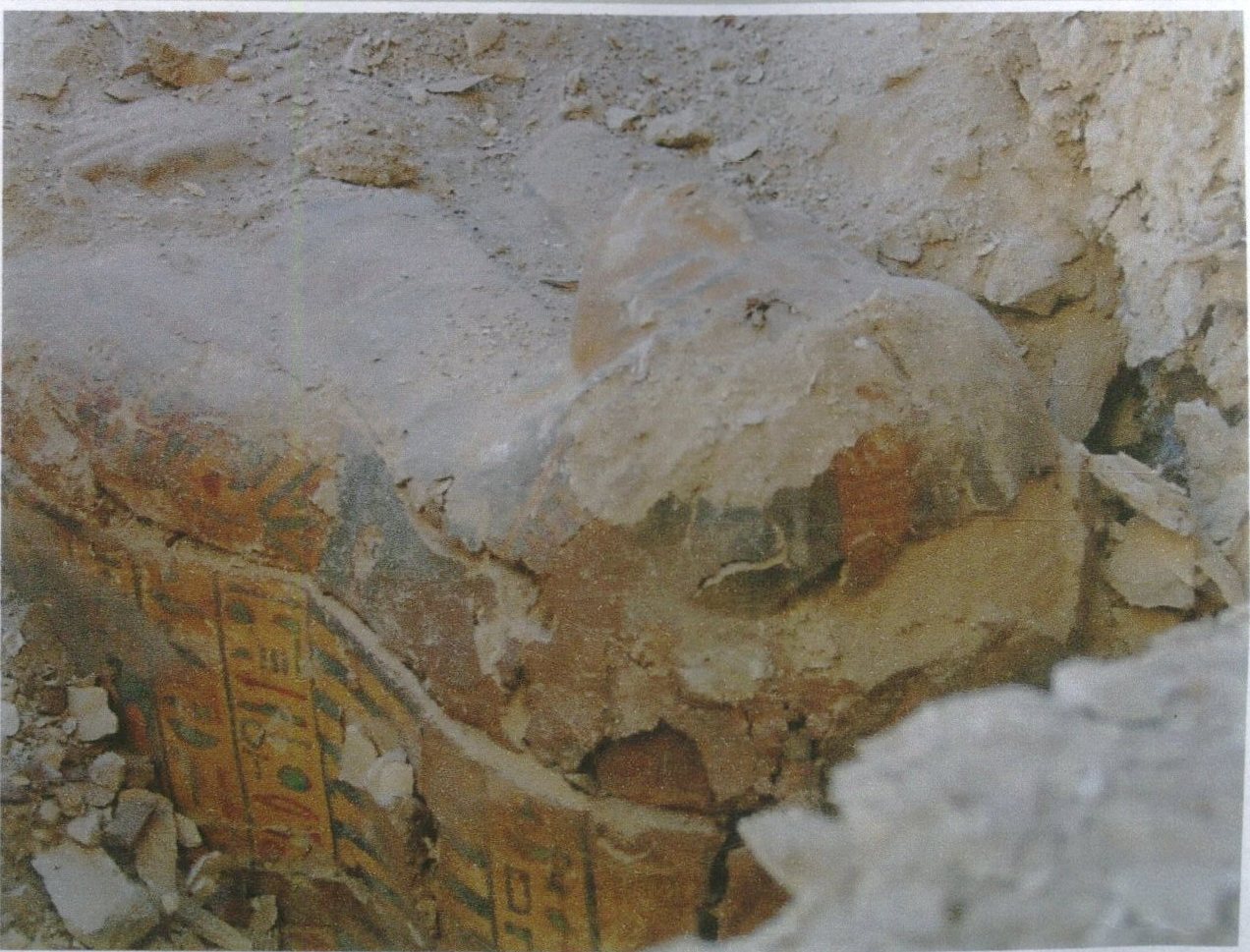The sarcophagus of Ankh-f-n-khonsu, a high priest of the ancient Egyptian god Amun Ra, has been unearthed in the west bank of Luxor, Antiquities Minister Mamdouh al Damaty announced Thursday.
The sarcophagus, which dates back to the 22nd Dynasty (943B.C-716B.C.,) was found in the tomb of Amenhotep-Huy, who served as Egypt’s viceroy and vizier during the reign of Pharaoh Amenhotep III (1391 B.C.–1353 B.C.)
Credits: Ministry of Antiquities
“The sarcophagus is made of wood and covered with a layer of plaster. It represents the deceased wearing a wig and crown with flowers and colorful ribbons along with ceremonial beard and a necklace adorning his chest,” Sultan Eid, Director of Upper Egypt Antiquities Department said in a statement Thursday.

Most of the scenes at Amenhotep-Huy’s tomb represent the vizier’s daily life activities of agriculture, hunting and fishing. It also features scenes of female musicians and dancers and shows Huy, among his family members, being greeted by high priests. Credits: Ministry of Antiquities
The sarcophagus also contains a number of hieroglyphic inscriptions with scenes of the deceased making offerings to several ancient Egyptian deities, he added.
Apparently, the tomb has been reused more than 500 years after it was completed, Mahmoud Afifi, the head of the Ancient Egyptian Antiquities Sector at the Antiquities Ministry said, adding that the sarcophagus is “well preserved.”
Discovered in 1978, the tomb of Amenhotep-Huy is located at Qurnet Marei, part of the Theban Necropolis on Luxor’s west bank, said Karar, adding that multi-national team of archaeologists led by the Institute for the Study of Ancient Egypt in Madrid has been studying and renovating the architectural elements of the tomb since 2009.
Most of the scenes at Amenhotep-Huy’s tomb represent the vizier’s daily life activities of agriculture, hunting and fishing. It also features scenes of female musicians and dancers and shows Huy, among his family members, being greeted by high priests, archaeologist Sherif el-Sabban told The Cairo Post Saturday.
The Theban Necropolis is an area of the west bank of the Nile, opposite Thebes (Modern Luxor) in Upper Egypt.
According to Sabban, it was used for ritual burials for several Pharaohs, noblemen, and high officials starting from the New Kingdom Period (1580 B.C.-1080 B.C.) and for over a millennium.





